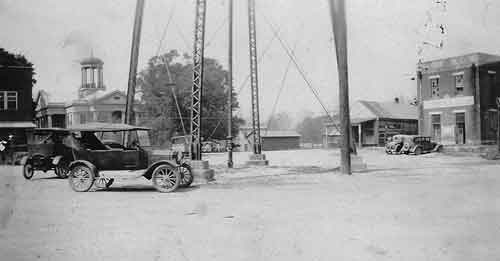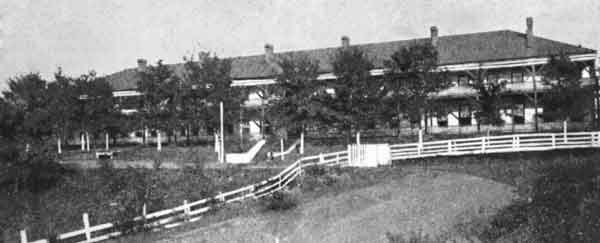|
Vignettes of Raymond
By
Three long-time residents of
Raymond, Lillian Boteler, Oliver V. Shearer Jr. and
Shopping in Raymond “I remember many people came to Raymond on Saturdays. The streets and sidewalks were filled with those who came to shop for the week. They came in wagons, riding horses and mules, or in cars and trucks. Around the square would be a mixture of parked autos and horse drawn wagons. Most of the wagons were parked on Oak Street alongside the courthouse. Sometimes it was difficult to walk on the sidewalks, especially in front of the grocery stores. The sidewalk on the west side of Main Street from Port Gibson St. to Oak St. would be solid with people. Couples wishing to be married would go to my uncle Ligon Shearer’s home to get the license and then go back to the courthouse and be married by a part-time preacher, Robert Jones, who would stand on the bed of his truck or wagon and marry the couple. "Saturday was the day the merchants made their money. In the summer time I remember raffles for bicycles, using coupons obtained from ice cream Dixie Cups at Brent’s Grocery, being held of the square. By mid-afternoon, the music from the juke box at the Negro Café (across the street from where the Post Office is now located) would be blaring and could be heard across town, as could be the Gaddis Cotton gin when it was running and Mr. Bryant’s grist mill behind Keith Press. Many farmers came into town to shop, as it was the only day of the week that they could - they were too busy working to come from their farms during week. Ah - the memories of the past."
The Only House in Raymond that was
Burned “This story was told by Lucretia Beaufait Holliday, my grandmother, to my aunt, Lillian Holliday. Lucretia Beaufait was born in 1858 and was only five at the time the house was burned. The house that was burned was on the site of the Kelly Williams’ home on Main Street. "According to my grandmother, who lived across the street from this site, the lady who lived in the house asked my grandmother to accompany her to the Union hospital. While they were there, this lady saw a Union soldier dying on a pillow confiscated from her house. She jerked the pillow from under his head and remarked, ‘No damned Yankee is going to die on my pillow.' The officer in charge of the hospital replied, 'Madam, you’ll regret this,” and that night her house was burned."
Mineral Wells in Raymond “More than 70 years ago, two mineral wells skirted Raymond. Hubbard’s Well, the smaller one, was located where the Laurel Creek Subdivision is being developed on Port Gibson Street. It was a two-story boarding house where people came to stay and drink the healing water. The wells also delivered jugs of water throughout the area. I made many visits to Hubbard’s Well with my father when he delivered groceries and meats to the owner. Shirley and Matthew P’Pool and E. O. Hubbard, extended family members, lived across the street. Hubbard’s Well burned during the early part of the century. "Located a few miles south of Raymond was a much larger and well-known medicinal well know as Cooper’s Well. The well was a dream come true for Rev. Preston Cooper when, during the 1840s, he drilled through approximately 100 feet of rock and discovered mineral water. An elaborate hotel was built on the site and patrons came from all across the United States to enjoy the curative powers of the water as well as the fine dining and entertainment provided on the grounds. This hotel burned after the war but another one was built on the site during the 1880s by the Spengler family. For years, Cooper’s Well remained a lively place. My mother rented an apartment in our home to the same family from Illinois each summer. They would vacation a week or more, going out daily to the wells to enjoy the good food and drink the water. They always returned to Illinois with large jugs of the water for their various ailments. "When my father and I would deliver groceries to Cooper’s Well I would visit with Mrs. Spengler and her daughter, Natala. During the visits, Dad would always let me pull up a pail of water from the well. Then, we would sit under the big gazebo while enjoying nature and sipping the water. "I’ve often wondered what happened to that tall graveled hill that led to Cooper’s Well. Dad’s old car would ‘chug-a-lug’ up and up that hill. I just knew that we would never make it to the top. Maybe the hill is still there as a part of what is now Midway Road. In my child’s mind it was like climbing a big mountain. On the way back to the store, as we left the hotel, Daddy would put the car gear in neutral and coast to the bottom of the hill. It always frightened me. "The Spengler hotel finally burned in the 1940s leaving only the pavilion on the property. It was devastating to all who had enjoyed its water and dining facilities. We missed Cooper’s Well business and the many friendships formed there.”
|

